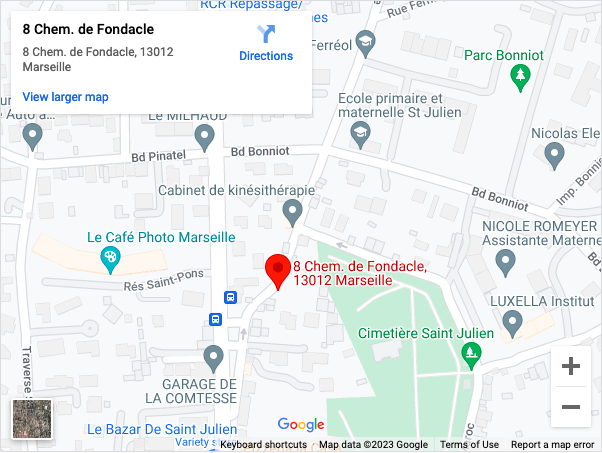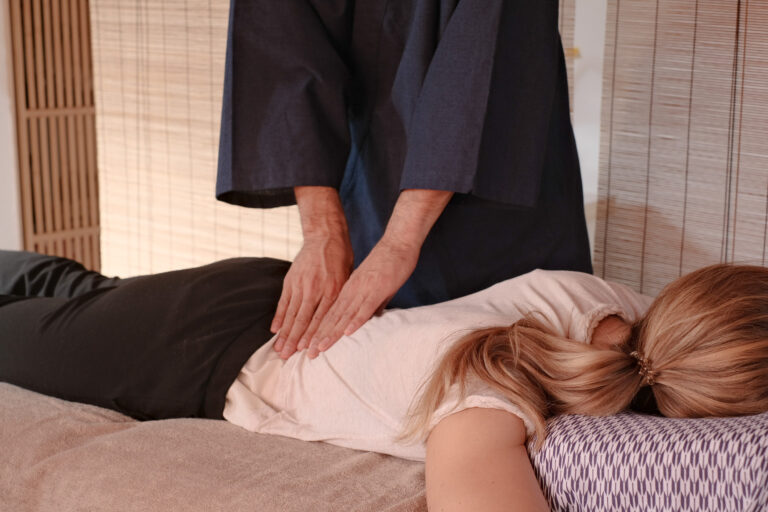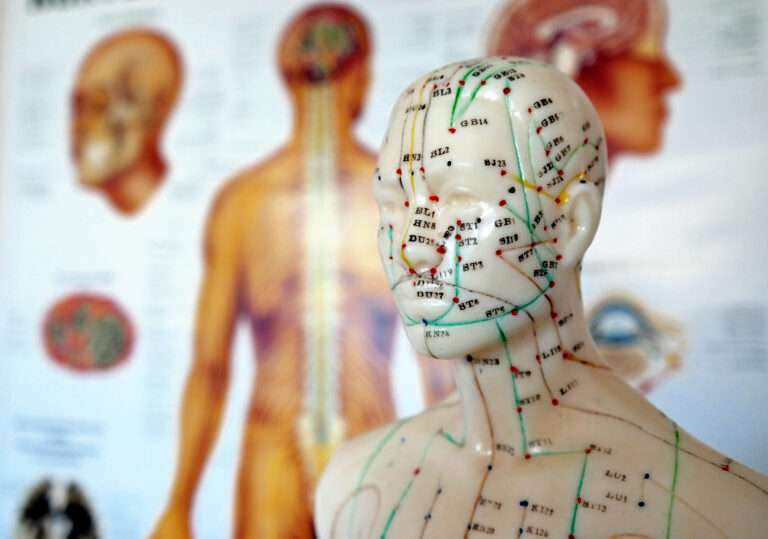WHAT IS SHIATSU?

Shiatsu is a traditional manual therapy born in Japan, where “shi” means fingers and “atsu” means pressure. Shiatsu was created more than 100 years ago, between the Meiji and Taisho periods, as a combination of ancient Japanese traditional therapies such as “Anma” and “Do-in”, and Western techniques such as chiropractic and osteopathy. Shiatsu is a widespread practice in Japan and is familiar to all generations. It is also known internationally and an increasing number of people are learning its techniques in countries such as France, Italy, Spain and Canada.
Effectiveness of Shiatsu
Shiatsu is a technique in which the practitioner applies pressure to various parts of the body with the fingers or palms of the hands in order to reduce fatigue and improve discomfort. The main benefits include reduction of muscle stiffness and pain, improvement of postural distortion, promotion of fluid circulation, and improvement of internal organ function through reflex action. It also has a relaxing effect on mental stress. In Japan, shiatsu is considered an alternative medicine, and shiatsu practitioners are recognized by the Ministry of Health, Labor and Welfare as a national qualification.
Shiatsu is mainly effective for the following symptoms:
- Chronic fatigue
- Mental stress
- Headache, Migraine
- Shoulder stiffness
- Back pain
- Insomnia
- Numbness in hands and feet
- Autonomic nervous system disorder
- Digestive disorders
- Joint pain
- Swollen feet
- Dysfunction due to bad posture such as hunching back, distorted back, forward head posture (text neck), etc.
- Sports performance improvement etc.
Differences between Shiatsu and Western massage
Shiatsu differs from Western massage in its emphasis on pressure. While massage involves stroking and massaging the surface of the body, Shiatsu applies pressure to specific points on the body with appropriate force. The sensation of pressure penetrating deep into the body is very different from other types of massage. Another feature is that it is performed on clothing, without the use of oil or other substances.
Shiatsu and Oriental Medicine
Shiatsu incorporates the concepts of Oriental medicine. Oriental medicine is a medical theory that originated in China about 2,000 years ago. While Western medicine treats localized areas of the body, Oriental medicine emphasizes the importance of regulating and harmonizing the functioning of the entire body. Prevention of disease is also considered to be the first priority. There are many other concepts that are not found in Western medicine, such as the concept of “Qi,” the energy that flows through the body, and the Five Elements philosophy, which compares the body to substances in the natural world.
Shiatsu mainly stimulates points called acupoints * to alleviate pain and regulate the function of internal organs and autonomic nerves.
*acupoints: Metrical acupoints. A concept in Eastern medicine, these points are mainly used in acupuncture treatment. There are more than 300 acupuncture points throughout the body, and stimulating them produces a variety of effects.
What is Shiatsu-Shi?
People who practice Shiatsu as a profession are called Shiatsu-shi (Shiatsu practitioners). Shiatsu may seem easy at first glance due to the simplicity of the method, but simply pressing in the blind is not Shiatsu. In order to obtain the correct effect of shiatsu, it is necessary to learn techniques to apply shiatsu that are suited to each individual’s body. To become a shiatsu practitioner in Japan, one must study medical knowledge and shiatsu techniques at a vocational school and then apply for a national examination. In Japan, where shiatsu is popular, shiatsu practitioners work in a wide range of fields, including shiatsu treatment clinics, relaxation facilities and training centers for athletes.
Contact

Opening Hours
| From Monday to Saturday | 9.00 am-7.00 pm |
| Sunday - National holidays | Close |

Address
8 chemin de Fondacle 13012 Marseille

Email

Phone


